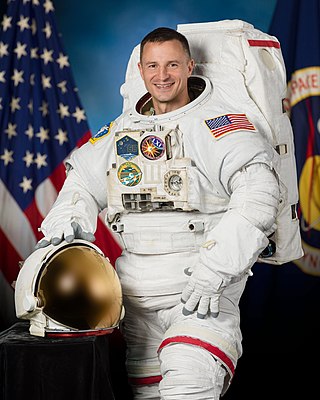
The International Space Station (ISS) is a large space station that was assembled and is maintained in low Earth orbit by a collaboration of five space agencies and their contractors: NASA, Roscosmos (Russia), ESA (Europe), JAXA (Japan), and CSA (Canada). The ISS is the largest space station ever built. Its primary purpose is to perform microgravity and space environment experiments.

Unity, also known as Node 1, is the first U.S.-built component of the International Space Station (ISS). This cylindrical module, constructed of steel by Boeing for NASA, serves as the critical link between the orbiting laboratory's Russian Orbital Segment and US Orbital Segment.

Harmony, also known as Node 2, is the "utility hub" of the International Space Station. It connects the laboratory modules of the United States, Europe and Japan, as well as providing electrical power and electronic data. Sleeping cabins for four of the crew are housed here.

Tranquility, also known as Node 3, is a module of the International Space Station (ISS). It contains environmental control systems, life support systems, a toilet, exercise equipment, and an observation cupola.

The International Standard Payload Rack (ISPR) is a steel framework container that is designed and been adopted by the International Space Station (ISS) program to support efficient integration and interchangeability of space payload hardware, such as machines and experiments. A typical rack contains 37 ISPR slots for science payloads, which are interchangeable to accommodate different components or payloads.

A Pressurized Mating Adapter (PMA) is a component used on the International Space Station (ISS) to convert the Common Berthing Mechanism (CBM) interface used to connect ISS modules to an APAS-95 spacecraft docking port. Three PMAs are attached to the US Orbital Segment of ISS. PMA-1 and PMA-2 were launched along with the Unity module in 1998 aboard STS-88; PMA-3 was launched in 2000 aboard STS-92. PMA-1 permanently connects the Unity and Zarya modules. International Docking Adapters were permanently installed on PMA-2 and PMA-3 in 2017 to convert them from the APAS-95 standard to the newer International Docking System Standard (IDSS).

The International Space Station programme is tied together by a complex set of legal, political and financial agreements between the fifteen nations involved in the project, governing ownership of the various components, rights to crewing and utilisation, and responsibilities for crew rotation and resupply of the International Space Station. It was conceived in September 1993 by the United States and Russia after 1980s plans for separate American (Freedom) and Soviet (Mir-2) space stations failed due to budgetary reasons. These agreements tie together the five space agencies and their respective International Space Station programmes and govern how they interact with each other on a daily basis to maintain station operations, from traffic control of spacecraft to and from the station, to utilisation of space and crew time. In March 2010, the International Space Station Program Managers from each of the five partner agencies were presented with Aviation Week's Laureate Award in the Space category, and the ISS programme was awarded the 2009 Collier Trophy.

Thomas Gautier Pesquet is a French aerospace engineer, pilot, European Space Agency astronaut, actor, musician, and writer. Pesquet was selected by ESA as a candidate in May 2009, and he successfully completed his basic training in November 2010. From November 2016 to June 2017, Pesquet was part of Expedition 50 and Expedition 51 as a flight engineer. Pesquet returned to space in April 2021 on board the SpaceX Crew Dragon for a second six-month stay on the ISS.

The US Orbital Segment (USOS) is the name given to the components of the International Space Station (ISS) constructed and operated by the United States National Aeronautics and Space Administration (NASA), European Space Agency (ESA), Canadian Space Agency (CSA) and Japan Aerospace Exploration Agency (JAXA). The segment consists of eleven pressurized components and various external elements, almost all of which were delivered by the Space Shuttle.

Docking and berthing of spacecraft is the joining of two space vehicles. This connection can be temporary, or partially permanent such as for space station modules.

The International Docking System Standard (IDSS) is an international standard for spacecraft docking adapters. It was created by the International Space Station Multilateral Coordination Board, on behalf of the International Space Station partner organizations; NASA, Roscosmos, JAXA, ESA, and the Canadian Space Agency.

Andrew Richard "Drew" Morgan is a NASA astronaut from the class of 2013.

SpaceX CRS-7, also known as SpX-7, was a private American Commercial Resupply Service mission to the International Space Station, contracted to NASA, which launched and failed on June 28, 2015. It disintegrated 139 seconds into the flight after launch from Cape Canaveral, just before the first stage was to separate from the second stage. It was the ninth flight for SpaceX's uncrewed Dragon cargo spacecraft and the seventh SpaceX operational mission contracted to NASA under a Commercial Resupply Services contract. The vehicle launched on a Falcon 9 v1.1 launch vehicle. It was the nineteenth overall flight for the Falcon 9 and the fourteenth flight for the substantially upgraded Falcon 9 v1.1.

Dragon 2 is a class of partially reusable spacecraft developed, manufactured, and operated by American space company SpaceX for flights to the International Space Station (ISS) and private spaceflight missions. The spacecraft, which consists of a reusable space capsule and an expendable trunk module, has two variants: the 4-person Crew Dragon and Cargo Dragon, a replacement for the Dragon 1 cargo capsule. The spacecraft launches atop a Falcon 9 Block 5 rocket, and the capsule returns to Earth through splashdown. Since 2020, when Dragon 2 flew its first crewed and uncrewed flights, it has proven to be the most cost-effective spacecraft ever used by NASA.

The International Berthing and Docking Mechanism (IBDM) is the European androgynous low impact docking mechanism that is capable of docking and berthing large and small spacecraft. The development of the IBDM is under ESA contract with QinetiQ Space as prime contractor.

The International Docking Adapter (IDA) is a spacecraft docking system adapter developed to convert APAS-95 to support docking with spacecraft that implement the International Docking System Standard. The IDA uses NASA Docking System (NDS) hardware. An IDA was permanently installed on each of the International Space Station's (ISS) two open Pressurized Mating Adapters (PMAs), both of which are connected to the Harmony module.

SpaceX CRS-18, also known as SpX-18, was SpaceX's 18th flight to the International Space Station under the Commercial Resupply Services program for NASA. It was launched on 25 July 2019 aboard a Falcon 9 rocket.

The Boeing Orbital Flight Test-2 was a repeat of Boeing's unsuccessful first Orbital Flight Test (Boe-OFT) of its Starliner spacecraft. The uncrewed mission was part of NASA's Commercial Crew Program. OFT-2, using Starliner Spacecraft 2, launched 19 May 2022 and lasted 6 days. Starliner successfully docked with the International Space Station (ISS) on 21 May 2022. It stayed at the ISS for 4 days before undocking and landing in the White Sands Missile Range on 25 May 2022.

The Commercial Crew Program (CCP) provides commercially operated crew transportation service to and from the International Space Station (ISS) under contract to NASA, conducting crew rotations between the expeditions of the International Space Station program. American space manufacturer SpaceX began providing service in 2020, using the Crew Dragon spacecraft, and NASA plans to add Boeing when its Boeing Starliner spacecraft becomes operational no earlier than 2025. NASA has contracted for six operational missions from Boeing and fourteen from SpaceX, ensuring sufficient support for ISS through 2030.

SpaceX Crew-2 was the second operational flight of a Crew Dragon spacecraft, and the third overall crewed orbital flight of the Commercial Crew Program. The mission was launched on 23 April 2021 at 09:49:02 UTC, and docked to the International Space Station on 24 April at 09:08 UTC.

























